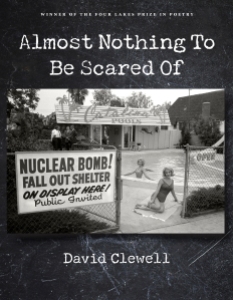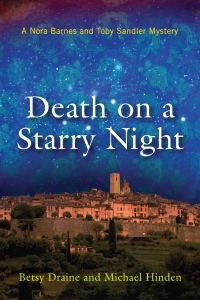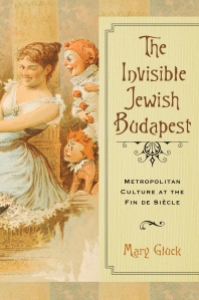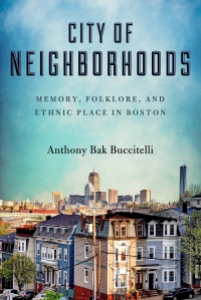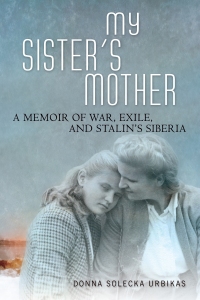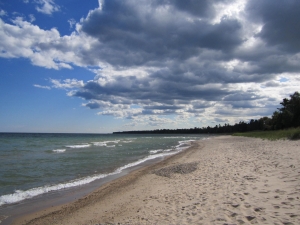
Betsy Draine and Michael Hinden are the authors of the Nora Barnes and Toby Sandler mystery series published by the University of Wisconsin Press. Death on a Starry Night, the third in the series, follows Murder in Lascaux and The Body in Bodega Bay. We talked with them about the new book and their process of writing novels together.
Nora and Toby solved their first mystery on vacation in southwest France and their second at their home in northern California. Why did you send them back to France?
 Mike: It was Vincent Van Gogh who lured us back! We read Steven Naifeh and Gregory White Smith’s new biography of the artist, which argues that Vincent didn’t commit suicide. Instead, they claim he was murdered.
Mike: It was Vincent Van Gogh who lured us back! We read Steven Naifeh and Gregory White Smith’s new biography of the artist, which argues that Vincent didn’t commit suicide. Instead, they claim he was murdered.
Betsy: That made a great premise for a mystery. Who killed Van Gogh? Who kept the secret, and why? Since Vincent painted his most famous works and met his death in France, that’s where the trail led. We were happy to return there for our research—it’s where we started writing together. Our first book was a memoir about buying a summer home in the Dordogne (A Castle in the Backyard: The Dream of a House in France).
Why did you set the action in St. Paul-de-Vence, above the Riviera?
Mike: We’re always looking for colorful settings, but this one had special resonance for me. The summer after my junior year abroad in Paris, I got a job as a singing waiter in St. Paul-de-Vence, a beautiful walled village in Provence. I fell in love with the place and didn’t want to come home. My dream was to stay and become a writer, maybe write a novel set in the village. Well, my parents talked me out of it, and like a good son, I came home and finished college. It took a half-century to get a second bite of the apple, but this was it. As they say, it’s never too late.
Betsy: St. Paul isn’t far from Van Gogh’s territory, though Vincent never painted there. We created a link by setting the action at a fictional scholarly conference about Van Gogh held at the Maeght Foundation, an actual museum and research institute on the outskirts of the village.
What is it about Van Gogh’s death that remains a mystery?

Vincent Van Gogh
Mike: He died of a gunshot wound, but beyond that, little is certain. Even at the time, there were questions about his death. What happened to the gun that was used? The police never found it. What’s more, they never found his easel and the other materials he was carrying with him on the day of the shooting, including the painting he was working on—they all disappeared. What became of them? Was someone else at the scene? If Vincent intended to kill himself, why did he shoot himself in the side rather than in the head, and why did he seek help afterwards? Why didn’t he leave a suicide note? There are enough gaps in what we know about the shooting to call for speculation.
Does your plot parallel the account of Vincent’s death given by Naifeh and Smith in their biography?
Betsy: No. We think they build a weak case against the person they name as a suspect, and there are better explanations, one of which we dramatize. Our novel has two narrators. The first is a contemporary of Van Gogh who gives his account of how the artist died. The second narrator is our character Nora. The art history conference she’s attending starts with the murder of the keynote speaker. Nora and Toby set out to unmask the killer. The two plot lines cross and come together in the conclusion. Working out the connections was fun and also a challenge.
How do the two of you write novels together without causing a divorce?
Betsy: We do a lot of talking first about ideas for settings, plots, and characters. Then Mike writes a chapter-by-chapter outline, and we tinker with that until we are in agreement. Then we take turns writing scenes. When I’m finished with a scene, I turn it over to Mike and he edits it. And vice-versa. We go back and forth until we’re satisfied that we’ve done the story justice and the voice of the novel is consistent. When two writers decide to re-write each other on a daily basis, you might say they’re asking for trouble.
Mike: So we made a rule that says we’ll accept the other’s edits without a fight. We call it our mutual non-aggression pact. If one of us says “it goes,” it does. By and large, the process works for us. We’re still married, and we’re still writing together.
Are you working on a fourth Nora and Toby mystery?
Betsy: We are! We can’t say much yet, except that our sleuths will go to Ireland.

